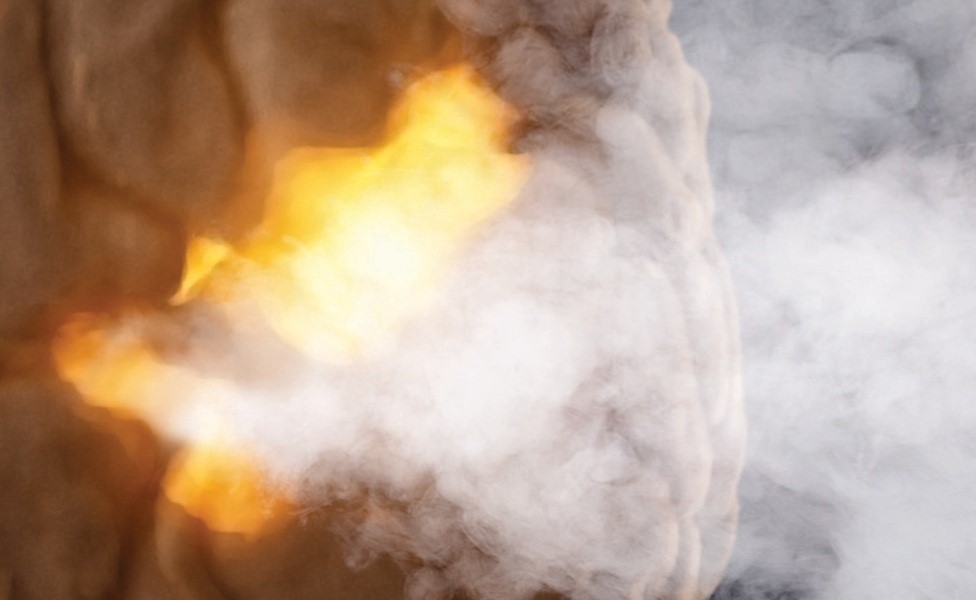Institutsmitteilung
We are delighted to announce the beginning of "STEAM Imaging III," our interdisciplinary exploration of digital medicine and the human body, jointly hosted with Ars Electronica in Linz, Austria, in collaboration with the International Fraunhofer Talent School Bremen and the UCLA ArtSci Center, Los Angeles, USA.
The remote residency, and the course following, includes encounters during 2020 that will connect the artist, Fraunhofer MEVIS scientists, and school students from Schulzentrum Walle (SZ Walle) in Bremen. The artist's work will also be featured at the Ars Electronica Festival in Linz in September 2021. “STEAM Imaging”, designed and led by Bianka Hofmann and Sabrina Haase, adds interdisciplinary on-site and online methods to STEAM teaching by connecting digital medicine with other disciplines to foster engagement with and ownership of future technology. We understand STEAM as a synonym for exploring and integrating the mindsets, and ecological network of different subjects within which the A includes ALL other disciplines (science, technology, engineering, all other disciplines, and mathematics). School students are encouraged to engage with digital medicine and ask questions about the physical body and approach these beyond disciplines.
This year, the artist in residence will be Eli Joteva, a Bulgarian intermedia artist and researcher based in Los Angeles, USA. She earned her Master of Fine Arts degree from UCLA Design Media Arts and is a member of the UCLA Art Sci collective. The concept of her artwork entitled “IntraBeing” is guided by the questions: What lies within the bounds of being? How do our physical bodies and their virtual representations affect one another? “IntraBeing” unfolds the potentials that arise from the intra-active relationship between material reality and virtual models in digital medicine and our extrasensory environments. The project will investigate the measuring and modeling capacities of medical imaging and simulation procedures to re-imagine the enigmatic spaces that emerge at the limits of their resolution and computation.
Eli Joteva will work closely with the Institute’s researchers in an effort to explore and expand the boundaries of 3D imaging and predictive modeling. What type of values, implications, and limitations might emerge from the use of these new technologies for both clinicians and society as a whole? What new universes might unfold when we purposefully shift our focus to the inner spaces of the human body? And what new uncertainties might we uncover at the limits of perception - either human or machine - that may resolve only within our imaginations?
The integral part of the “STEAM Imaging III” residency program is the design of teaching modules for school students jointly created by artists and scientists. The resulting online course entitled “10 Evenings” will take place from September to December 2020. The aspired transdisciplinary course is not limited to the 10 online evenings but is connected to the classroom teachings at SZ Walle. In addition, members of the public are encouraged to join the school students during virtual excursions and Q&A sessions to the institutes' MR laboratory, to the Ars Electronica Center, and to UCLA CNSI California NanoSystems Institute ArtSci Center. Selected talks are also open to the public, including those by Prof. Victoria Vesna, media artist and experimental researcher.
Being able to move successfully between a variety of disciplines is a crucial competence for future education and innovation. The hosts of the residency program aim to strengthen multidisciplinary talents, encourage school students to explore educational models of the future and engage in self-driven ways with art, science, and technology to gain new skills that can expand their creative practice and expression. At the core are participatory, interdisciplinary inquiries which include both fundamental knowledge and free creative exploration to understand a subject thoroughly. We seek to trace and follow new connections between art, science, and technology – giving artistic practice an important role in educational models for science and medicine.
We believe art and humanities are influential, critical voices to describe the effects of technology on humans and society, and should be considered in technological developments at an early stage. These conversations can enhance contrasts to make underlying movements in tech development visible and contribute to new solution contexts. The artwork and the STEAM course can function as an experimental framework to open up critical discussions about possible unwanted side effects as well as the desired impacts of digital medicine.
 Fraunhofer-Institut für Digitale Medizin MEVIS
Fraunhofer-Institut für Digitale Medizin MEVIS